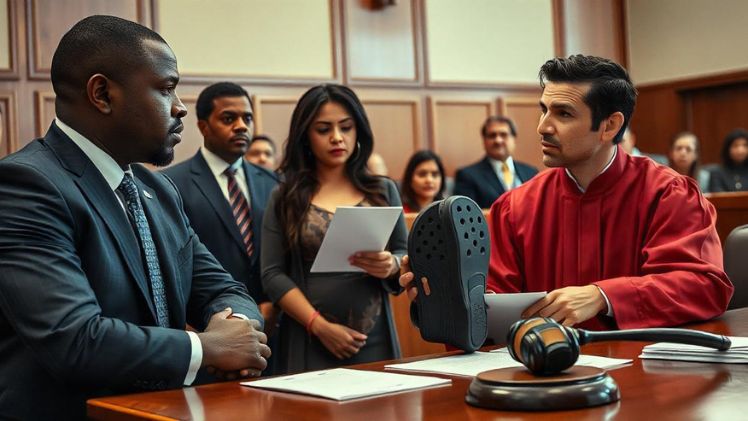The Crocs class action lawsuit has drawn significant attention in recent months, impacting one of the most iconic footwear brands in the world. Known for their signature clogs, Crocs has long been a staple for casual comfort, but this legal battle raises questions about its business practices. In this blog, we’ll explore the lawsuit in depth, covering its origins, the allegations against Crocs, its legal and consumer implications, and how affected parties can seek justice.
1. What Is a Class Action Lawsuit?
A class action lawsuit allows a group of individuals to collectively sue a defendant, typically for similar grievances. In this case, the Crocs class action lawsuit involves allegations brought by customers, retailers, and possibly competitors who believe they have been wronged by the company’s actions. Class actions are especially impactful because they pool resources, ensuring individuals have a stronger voice in court.
2. Background of Crocs as a Brand
Crocs, founded in 2002, skyrocketed to popularity with its foam clogs that promise comfort and durability. The brand has achieved global recognition, selling millions of pairs annually. However, its massive success has not been without controversy. Crocs has faced previous accusations of patent infringements and anti-competitive practices, culminating in the recent class action lawsuit.
3. Origins of the Crocs Class Action Lawsuit
The class action lawsuit stems from allegations of unethical business practices, including:
- Overpricing their products through monopolistic strategies.
- Allegedly infringing on competitors’ patents.
- Misleading advertising claims regarding the durability and sustainability of their products.
These issues have sparked outrage among consumers and industry stakeholders, paving the way for the lawsuit.
4. Key Allegations in the Crocs Class Action Lawsuit
The lawsuit accuses Crocs of the following:
- Monopolistic Behavior: Leveraging its dominant market position to suppress competitors.
- False Advertising: Misleading claims about product quality and durability.
- Patent Infringement: Allegedly copying designs from smaller competitors.
Each of these allegations carries significant legal and financial risks for the company.
5. Legal Basis for the Crocs Class Action Lawsuit
The lawsuit is grounded in antitrust laws, false advertising statutes, and intellectual property regulations. Plaintiffs argue that Crocs has violated these laws, causing financial harm to consumers, retailers, and competitors. If proven guilty, the company could face hefty fines, settlements, and stricter regulatory scrutiny.
6. How Are Consumers Affected?
Consumers are at the heart of the lawsuit, as they claim to have overpaid for Crocs products due to monopolistic practices. Additionally, if the company’s advertising is proven misleading, customers may feel deceived about the quality and value of the products they purchased.
7. Financial and Market Impact on Crocs
The lawsuit has already impacted Crocs’ reputation and financial standing. Key implications include:
- Stock Market Decline: Investor confidence has taken a hit, leading to fluctuations in stock prices.
- Potential Settlements: Crocs may need to allocate significant resources for legal fees and settlements.
- Brand Image Damage: Public perception of Crocs has shifted, potentially affecting future sales.
8. Responses from Crocs
Crocs has denied the allegations, emphasizing its commitment to innovation and fair competition. The company has stated that it will vigorously defend itself in court, asserting that the claims are baseless. Whether these defenses will hold up in court remains to be seen.
9. Possible Outcomes of the Crocs Class Action Lawsuit
The lawsuit could lead to several potential outcomes:
- Settlement: Crocs may choose to settle the case out of court to avoid prolonged litigation.
- Court Ruling Against Crocs: A court ruling in favor of the plaintiffs could result in heavy penalties.
- Dismissal: If the evidence is insufficient, the case may be dismissed.
Each outcome has far-reaching consequences for Crocs and the broader footwear industry.
10. Lessons for Consumers and Brands
This lawsuit underscores the importance of transparency and accountability for businesses. For consumers, it highlights the need to stay informed about the brands they support and the importance of holding companies accountable for unethical practices.
Conclusion
The Crocs class action lawsuit is more than a legal dispute; it’s a cautionary tale about corporate responsibility and consumer rights. As the case unfolds, it will serve as a benchmark for how large companies navigate complex legal challenges. For consumers, it’s a reminder of the power of collective action in demanding transparency and fairness from brands.
FAQs about Crocs Class Action Lawsuit
1. What are the main allegations in the Crocs class action lawsuit?
The main allegations include monopolistic practices, false advertising, and patent infringement.
2. How can consumers join the lawsuit?
Consumers can join the lawsuit by reaching out to the legal representatives managing the case. Check the official case details for specific instructions.
3. What are the potential outcomes of the lawsuit?
Outcomes could include a settlement, a court ruling against Crocs, or dismissal of the case. Each scenario carries unique implications for the company and its stakeholders.
4. Has Crocs responded to the allegations?
Yes, Crocs has denied the allegations, asserting that the claims are baseless and that they will defend their position in court.
5. What does this lawsuit mean for the footwear industry?
The lawsuit could set a precedent for how companies address antitrust issues and intellectual property disputes in the competitive footwear market.

